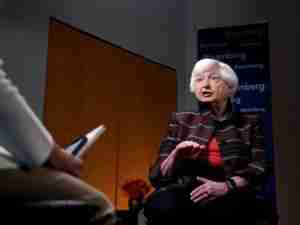The EU’s Brexit Negotiators: Veterans of European Backroom Wars
By: Jonathan Stearns and Ian Wishart | Sep 28 2016 at 12:33 AM | International Trade
The European Union is fleshing out its negotiating team for the U.K.’s planned withdrawal from the 28-nation bloc.
While leaders such as German Chancellor Angela Merkel will be key to what Brexit ends up looking like, much of the work will be done by an array of politicians and bureaucrats representing different EU institutions. All are armed with an abundance of technical expertise, diplomatic sensibility and political savvy from their years operating supranational networks in Brussels.
Following are some of the EU personalities who will be active—mainly behind the scenes—once U.K. Prime Minister Theresa May triggers the exit negotiations and the two-year Brexit process begins.
Michel Barnier
Barnier is the chief Brexit negotiator of the European Commission, the EU’s executive arm and policy engine. Few people bridge the divide between EU and national politics as well as the 65-year-old Frenchman, who has held heavyweight posts in both Brussels and Paris over the past two decades.
Barnier was EU financial-services chief from 2010 to 2014, when he oversaw an expansion of banking regulation to tackle the financial crisis and the U.K. government repeatedly clashed with the bloc over issues ranging from a cap on bankers’ bonuses to the location of clearinghouses. Before that, Barnier served variously as European commissioner for regional policy—a post that manages a big chunk of the EU budget—a member of the European Parliament, France’s foreign minister and French agriculture minister.
With conservative political roots, old-school manners and deep discretion, Barnier has gained respect across parties in Europe—and even in London—for being evenhanded in his dealings and for acting as much as a European citizen as a French one.
As part of a team of up to 20 people that he is building, Barnier has recruited as his No. 2 a German named Sabine Weyand who is a deputy director general in the commission’s trade department.
Didier Seeuws
Seeuws is a seasoned Belgian diplomat whom EU President Donald Tusk chose as his Brexit czar. Because Tusk’s job is to chair summits of the EU’s national leaders, Seeuws will probably be a point person for the broad political questions arising from Brexit rather than for detailed policy making.
Seeuws was chief of staff to Tusk’s predecessor, Herman Van Rompuy, a former Belgian prime minister who was the first person to hold the job of EU president. Seeuws, who like Van Rompuy comes from the region of Flanders, is known in Brussels circles for his intellectual sharpness, eye for detail and stamina.
With a deep understanding of the EU’s legal complexities and its subtle political dynamics, Seeuws was hailed for his middle-of-the-night alertness during the debt crisis and his readiness to continue working as dawn broke. He helped bridge divisions among the bloc’s leaders when they created a euro-area rescue fund, introduced tougher budget rules and agreed on bailouts for Greece.
Martin Selmayr
The German chief of staff of European Commission President Jean-Claude Juncker has a reputation for being able, ambitious and ruthless. Inside the commission, no top aide of any previous president in memory has wielded such power.
Selmayr rose through the EU ranks at breakneck speed. Within a decade he has gone from being a mere spokesman to head of cabinet for Luxembourg’s appointee to the commission to now being the president’s right-hand man—angering, isolating and falling out with EU officials along the way. National diplomats talk of his abrasive style while commission staff lament so much power being centralized in one office, as some get demoted and others resign.
Selmayr leaves his mark on everything from commission personnel appointments and legislative initiatives to consultations with EU capitals and European refugee-crisis talks.
Cecilia Malmstroem
The EU’s trade commissioner runs the portfolio most directly linked to Britain’s future economic relationship with the bloc. Trade is also one of the original common European policies, giving the commission more clout on a day-to-day basis than it has in areas such as energy, justice and defense where EU governments retain sovereignty.
Malmstroem is a Swedish Liberal and Brussels veteran with free-trade instincts in line with those of Britain. A former EU home-affairs commissioner, Malmstroem is a cautious operator whose most controversial action as Europe’s trade chief may have come during her European Parliament confirmation hearing when she flagged up edits to her written testimony orchestrated by Selmayr.
Malmstroem has been going toe-to-toe with negotiators in a host of countries including the U.S., Japan and Canada, supported by a team of about 700 in the trade department in the European Commission. Her political mettle was tested early in her term when, amid growing popular concerns about future EU trade deals, she put on hold talks on investor protection with the U.S.
Guy Verhofstadt
Verhofstadt is the point man for Brexit in the European Parliament, where he also leads the assembly’s Liberal faction and is among the most vocal proponents of deeper European integration.
A former Belgian prime minister for whom Seeuws was spokesman, Verhofstadt in his Brexit role will keep the leaders of the EU Parliament’s political groups and its president informed of developments.
While the EU Parliament in general and Verhofstadt in particular won’t manage the daily business of Brexit, the assembly will have to give its consent to the final deal. In the meantime, the 751-seat Parliament and Verhofstadt could act as barometers of the popular reactions across Europe to the Brexit process.








